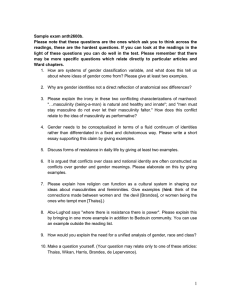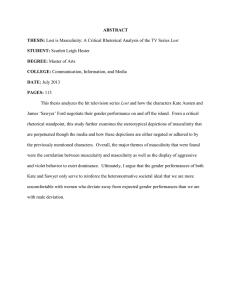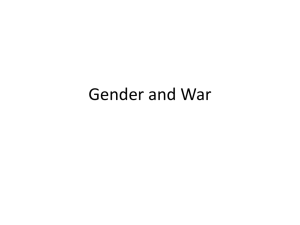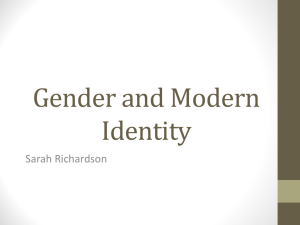Sociology 327 Exam Two Review Sheet Fall 2004
advertisement
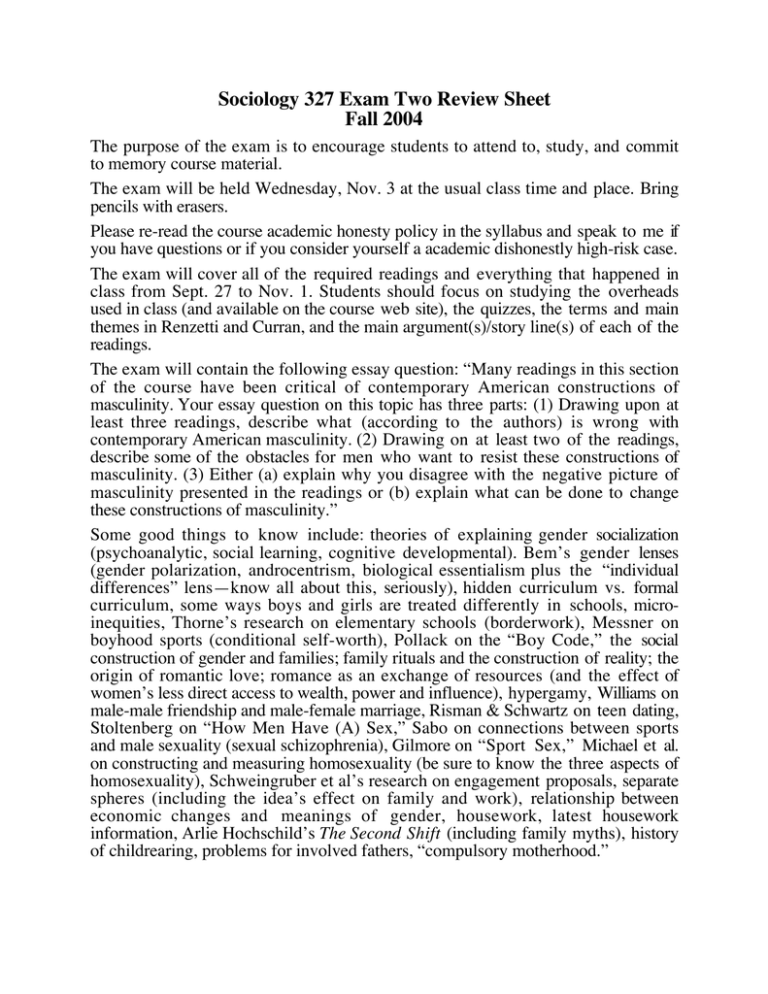
Sociology 327 Exam Two Review Sheet Fall 2004 The purpose of the exam is to encourage students to attend to, study, and commit to memory course material. The exam will be held Wednesday, Nov. 3 at the usual class time and place. Bring pencils with erasers. Please re-read the course academic honesty policy in the syllabus and speak to me if you have questions or if you consider yourself a academic dishonestly high-risk case. The exam will cover all of the required readings and everything that happened in class from Sept. 27 to Nov. 1. Students should focus on studying the overheads used in class (and available on the course web site), the quizzes, the terms and main themes in Renzetti and Curran, and the main argument(s)/story line(s) of each of the readings. The exam will contain the following essay question: “Many readings in this section of the course have been critical of contemporary American constructions of masculinity. Your essay question on this topic has three parts: (1) Drawing upon at least three readings, describe what (according to the authors) is wrong with contemporary American masculinity. (2) Drawing on at least two of the readings, describe some of the obstacles for men who want to resist these constructions of masculinity. (3) Either (a) explain why you disagree with the negative picture of masculinity presented in the readings or (b) explain what can be done to change these constructions of masculinity.” Some good things to know include: theories of explaining gender socialization (psychoanalytic, social learning, cognitive developmental). Bem’s gender lenses (gender polarization, androcentrism, biological essentialism plus the “individual differences” lens—know all about this, seriously), hidden curriculum vs. formal curriculum, some ways boys and girls are treated differently in schools, microinequities, Thorne’s research on elementary schools (borderwork), Messner on boyhood sports (conditional self-worth), Pollack on the “Boy Code,” the social construction of gender and families; family rituals and the construction of reality; the origin of romantic love; romance as an exchange of resources (and the effect of women’s less direct access to wealth, power and influence), hypergamy, Williams on male-male friendship and male-female marriage, Risman & Schwartz on teen dating, Stoltenberg on “How Men Have (A) Sex,” Sabo on connections between sports and male sexuality (sexual schizophrenia), Gilmore on “Sport Sex,” Michael et al. on constructing and measuring homosexuality (be sure to know the three aspects of homosexuality), Schweingruber et al’s research on engagement proposals, separate spheres (including the idea’s effect on family and work), relationship between economic changes and meanings of gender, housework, latest housework information, Arlie Hochschild’s The Second Shift (including family myths), history of childrearing, problems for involved fathers, “compulsory motherhood.”
